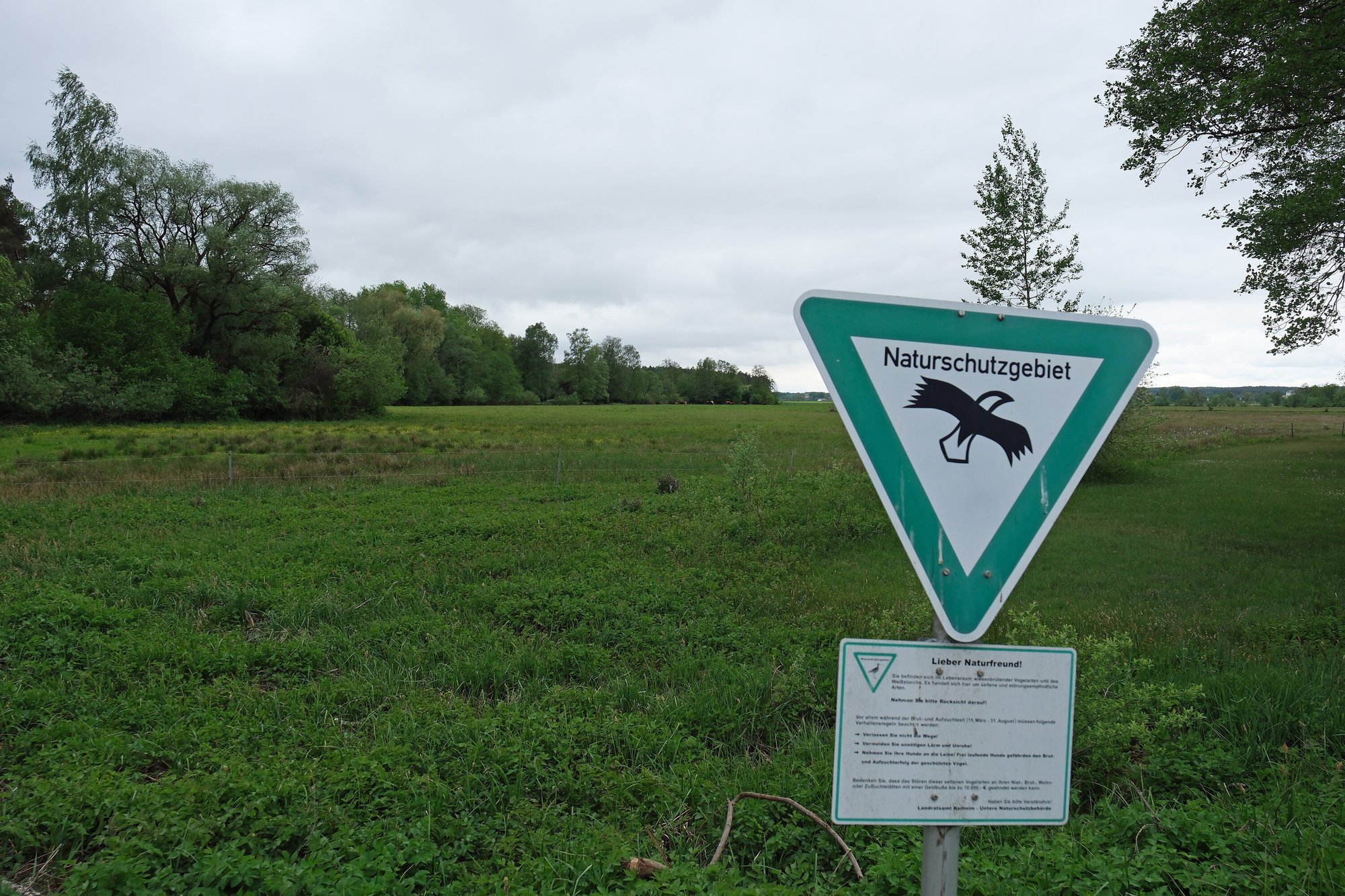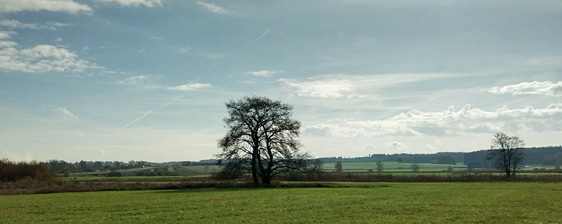Danube Biodiversity Corridor in Bavaria with German Association for Landcare (DVL) and local Landcare Associations
Objective
The Danube and its conservation are of vital importance in Europe, for biodiversity, habitats, identity and survival, as highlighted in our documentary Habitat.
Rising in western Germany and flowing to the Black Sea, the Danube crosses 9 countries. Stretching 2,860 km, it is the second-longest river in Europe and holds great biological significance, representing an important wetland area and a rich natural reserve.
The 875 km² catchment area of the Große Laber lies in the hilly region of Lower Bavaria, between the Isar and the Danube, and includes parts of the Hallertau to the west and the Gäuboden to the northeast.
In this selected catchment area of the Bavarian Danube, intensive agricultural management, particularly in recent decades, has caused significant decline of over 50% in both water availability and the diversity of native species, many of which are now at risk of extinction. This is especially evident in the wider surroundings of the three FFH areas located in the region.
From the analyses GIS studies, carried out together with Eurac Research and Wageningen University as part of the broader European initiative EU Biodiversity Corridors project, have identified this area as an ecological corridor in need of restoration. This is where we have decided to take action.
Area of intervention
This project in Germany focuses on the Große Laber case-study region, which is characterised by intensive agriculture, a high number of livestock and increasing tourism. It includes actions along 40 km of the catchment area, covering approximately 65 km² (6,500 hectares). The area includes the Niedermoor südlich Niederleierndorf Nature Reserve and will connect two other protected areas.
The two other main protected areas along the river are:
- The meadow bird breeding area Labertal bei Langquaid (Störche im Labertal), a nature reserve considered one of the priority areas for supporting meadow birds such as the northern lapwing and the Eurasian curlew of Bavaria
- The lower course of the Laber, in the districts of Kelheim and Regensburg, protected as an FFH area 7138 372 Tal der Großen Laber zwischen Sandsbach und Unterdeggenbach” (valley of the Große Laber between Sandsbach and Unterdeggenbach)
This area hosts important wetlands and peatlands now under stress due to climate change, as well as species that are highly threatened in Bavaria. These include the Eurasian curlew, northern lapwing, meadow pipit, common snipe, white stork, creeping marshwort, weatherfish (Misgurnus fossilis), and freshwater pearl mussel.
Project
In collaboration with the Deutsche Verband für Landschaftspflege (DVL), the German national landcare association, we designed the restoration study for this ecological corridor between the districts of Regensburg and Kelheim between 2023 and 2024. Implementation has been ongoing since 2025.
We are establishing a system of ecological connectivity between three nature reserves along the 40 km of the Große Laber, strictly regulating intensive agricultural and tourism activities through measures aimed at biodiversity conservation. The project promotes the integrated protection of threatened species, the creation of wetlands, and the preservation of water bodies, heathlands, and peatlands through tangible actions.
The project also contributes to the implementation of the European Water Framework Directive, which prioritises the good ecological status of water bodies. The actions undertaken will optimise connectivity, land management, and biotope maintenance, reverse biodiversity decline in the area, and benefit the listed species, all of which are at risk of decline or local extinction.
Potential project expansion
Within the broader EUBioCor project, the overarching framework in which this initiative is embedded, and in line with the European Biodiversity Corridor Map developed with EURAC and Wageningen University, we are assessing the possibility of extending the current 40 km ecological corridor by an additional 28 km. The aim is to connect the Große Laber valley to its confluence with the Danube.
In a later phase, the goal will be to integrate a further stretch of the Danube, up to the Bavarian Forest National Park, an important large scale conservation corridor. This will contribute to the strengthening of a regional ecological network that is currently fragmented but strategically important for biodiversity.
Updates
The Biotope Network Grosse Laber project's overarching vision is to create a resilient, interconnected network of natural habitats, enhancing biodiversity and restoring ecological function across the Grosse Laber valley, in the Kelheim and Regensburg districts, along a 40km key ecological corridor. By implementing a diverse range of targeted initiatives, from species specific monitoring to large scale habitat restoration and revitalisation, the project is achieving measurable progress toward this critical environmental goal.
The following sections provide a high level summary of just a selection of the many ongoing actions:
Regensburg District: Monitoring and Ecological Restoration
• Tree Frog Monitoring & Habitat Optimization
Extensive monitoring across seven water bodies between March andJuly 2025 revealed by September a limited presence of common amphibians and confirmed the critical absence of the target Tree Frog species, Hyla arborea. This underscores the urgent need for habitat optimisation measures planned for winter 2025 and 26, including the construction of artificial amphibian ponds and frost proof winter retreats.
• Improvement of Watercourses
Targeted structural improvements were executed through coordinated action, including the planting of over 250 willow cuttings between March and April 2025 and the installation of gravel beds and rootstocks from April to July 2025. By the end of October 2025, these efforts had upgraded nearly 5 km of the Grosse Laber over a 10km stretch and created two new gravel spawning grounds.
Kelheim District: Conservation Triumphs
• Rewetting Bog Land Area
Following spring 2025 feasibility studies and official approval, a key intervention was executed in September 2025 with the digging of a shallow trench, allowing water to flow back into the Niederleierndorf Nature Reserve bog. This intervention has enabled the rewetting and restoration of up to 3.8 hectares.
• Cattle Grazing and Labertal Ox Initiative
Efforts launched in April 2025 successfully expanded extensive cattle grazing, with coordination and the development of tailored grazing plans addressing ecological needs, such as the protection of the meadow pipit. The accompanying Labertal Ox initiative made it public debut in July 2025, linking conservation efforts with the promotion of extensive and sustainable grazing to preserve biodiversity in rural landscapes.



Our Partners
DVL is a German Association for Biodiversity and Habitat Conservation, was founded in 1993. It is the non-profit umbrella organization of 200 landcare organizations in Germany.
DVL will contribute its experience to the development of the project. In particular with its two local organisations, the LPV VÖF Kelheim and the LPV Regensburg, it will ensure that the focused measures are effectively implemented and make a lasting contribution to the improvement of the biotope network. With many years of experience in implementing relevant projects in the region, they will pursue a supra-regional approach beyond district boundaries. Furthermore, the DVL will help disseminate the implemented solutions and achieved results beyond the project region, into Germany and the European context.
Project Data
 |
DURATION 2023-2027 *2023–2024 study phase, with precise project definition together with DVL, Eurac Research and Wageningen University *2025–2027 project implementation |
 |
TOTAL BUDGET €741,470.00 OUR INVESTMENT €625,670 *Study phase of €88,000.00 funded by Fondazione Capellino (approx. 2 years – 2023/24) > completed *Implementation phase of €653,470.00:
|


